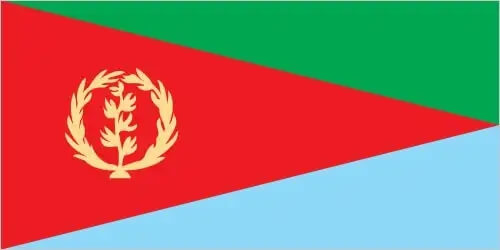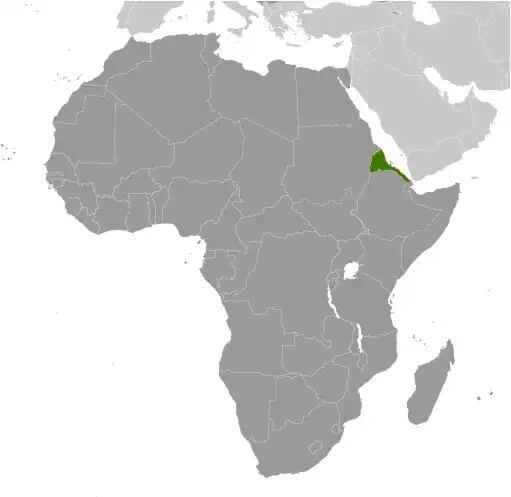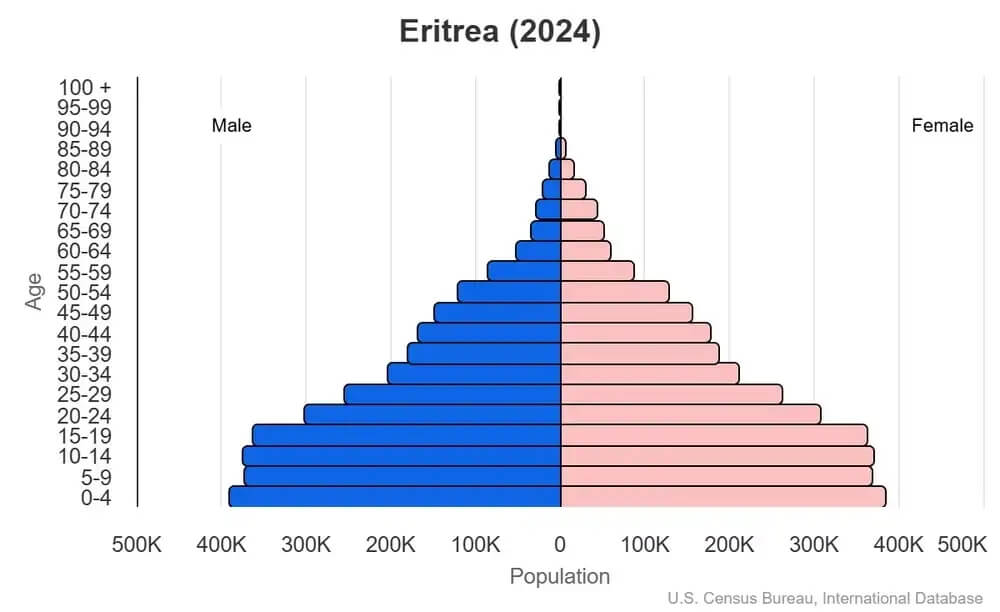World Book
Eritrea
Introduction
Background
After independence from Italian control and then UK oversight, the UN established Eritrea as an autonomous region within the Ethiopian federation in 1952. Ethiopian annexation sparked a 30-year conflict for independence that ended in 1991. Eritreans overwhelmingly approved independence in a 1993 referendum.
Geography
Area
total : 117,600 sq km
land: 101,000 sq km
water: 16,600 sq km
Climate
hot, dry desert strip along Red Sea coast; cooler and wetter in the central highlands (up to 61 cm of rainfall annually, heaviest June to September); semiarid in western hills and lowlands
Natural resources
gold, potash, zinc, copper, salt, possibly oil and natural gas, fish
People and Society
Population
total: 6,343,956 (2024 est.)
Ethnic groups
Tigrinya 50%, Tigre 30%, Saho 4%, Afar 4%, Kunama 4%, Bilen 3%, Hedareb/Beja 2%, Nara 2%, Rashaida 1% (2021 est.)
Languages
Tigrinya (official), Arabic (official), English (official), Tigre, Kunama, Afar, other Cushitic languages
Religions
Eritrean Orthodox, Roman Catholic, Evangelical Lutheran, Sunni Muslim
Population growth rate
1.12% (2024 est.)
Government
Government type
presidential republic
Capital
name: Asmara
Executive branch
chief of state: President ISAIAS Afwerki (since 24 May 1993)
head of government: President ISAIAS Afwerki (since 8 June 1993)
Diplomatic representation in the US
chief of mission: Ambassador (vacant); Chargé d'Affaires Berhane Gebrehiwet SOLOMON (since 15 March 2011)
Diplomatic representation from the US
chief of mission: Ambassador (vacant); Chargé d'Affaires Christine E. MEYER (since July 2025)
Economy
Economic overview
largely agrarian economy with a significant mining sector; substantial fiscal surplus due to tight controls; high and vulnerable debts; increased Ethiopian trade and shared port usage decreasing prices; financial and economic data integrity challenges
Real GDP (purchasing power parity)
$2.534 billion (2024 est.)
$2.465 billion (2023 est.)
$2.398 billion (2022 est.)
Real GDP per capita
$700 (2024 est.)
$700 (2023 est.)
$700 (2022 est.)
Exports
$624.3 million (2017 est.)
$485.4 million (2016 est.)
$374.898 million (2011 est.)
Exports - partners
China 67%, UAE 26%, Philippines 5%, Italy 1%, Croatia 1% (2023)
Exports - commodities
copper ore, zinc ore, gold, garments, liquor (2023)
Imports
$494.229 million (2010 est.)
$435.275 million (2009 est.)
Imports - partners
China 32%, UAE 27%, Turkey 9%, USA 7%, Italy 5% (2023)
Imports - commodities
trucks, sorghum, construction vehicles, wheat flours, other foods (2023)
Human Development Index
The country's Human Development Index (HDI) is 0.503, ranking it 178th out of 193 countries tested. (more information)



